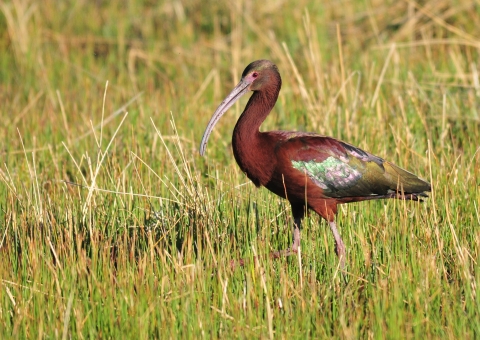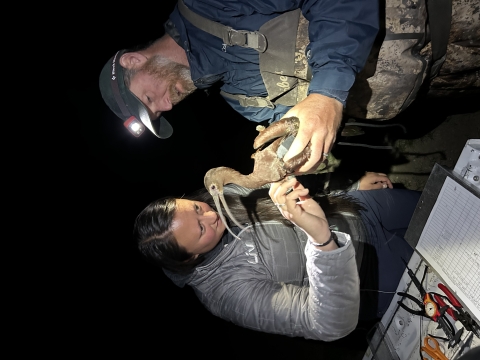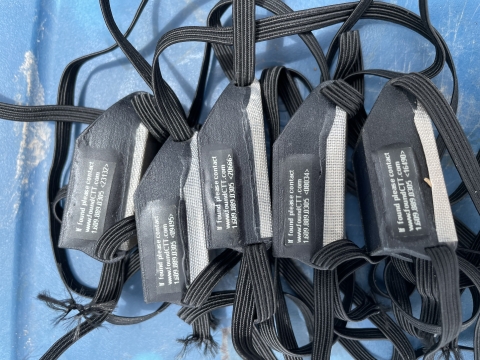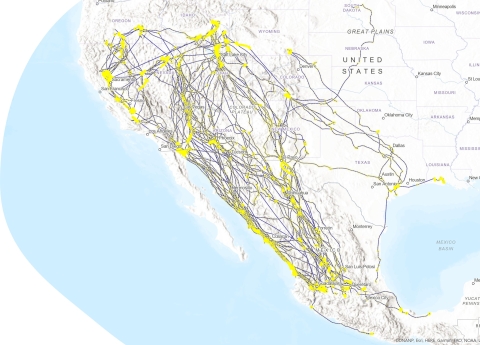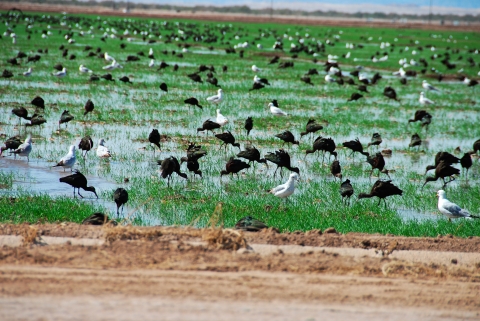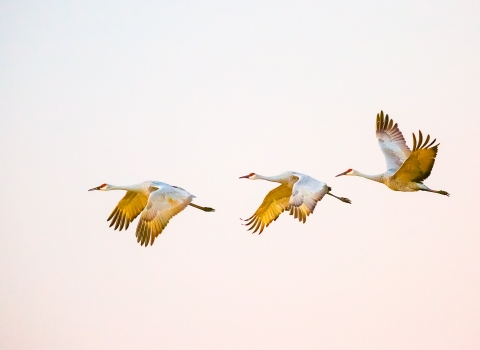Climate change is rapidly altering the availability and distribution of wetland habitats across North America. Migratory birds are particularly vulnerable to these changes because they depend on a connected network of wetlands across the landscape, making them susceptible to numerous risks as wetlands dry up across their range. That’s why biologists with the U.S. Fish and Wildlife Service started a project researching white-faced ibis – they are an “umbrella species” biologists can use to identify strategies that may offset the effects of climate change climate change
Climate change includes both global warming driven by human-induced emissions of greenhouse gases and the resulting large-scale shifts in weather patterns. Though there have been previous periods of climatic change, since the mid-20th century humans have had an unprecedented impact on Earth's climate system and caused change on a global scale.
Learn more about climate change driving wetland loss in western North America.
White-faced ibis are a colonial nesting waterbird emblematic of arid and semi-arid wetlands across western North America. They are a wading bird, mostly maroon in color with iridescent green and bronze wings, red eyes, and adults have a patch of pink skin right in front of their eyes.
This species is unique in its representation of wetlands as they depend on multiple types of wetland habitats and flooded agriculture fields (that mimic what used to happen on the landscape when wetlands were seasonally flooded) through their entire life cycle including breeding, migration, and wintering periods. It is for this reason that ibis are often considered a wetland umbrella species and an important indicator of biological diversity in water limited ecosystems. However, very little is known of ibis migratory pathways, site fidelity (knowing if they come back to the same locations) or wintering regions.
The Study
The Service is using white-faced ibis as an umbrella species to support climate-resilient conservation of wetland ecosystems in western North America.
What does that mean? By capturing, tagging and tracking tagging adult ibis, we can research ibis movement and fill in the scientific gaps in knowledge about many species of migratory waterbirds and the wetland habitats they need throughout their full life cycle including breeding, migration and wintering.
And why does all that matter?Because when we know the habitats ibis are using and how they move between them, we can prioritize the landscapes we need to conserve to ensure they can thrive into a future where climate change is affecting them.
By far, the coolest part of this project is capturing and tagging the birds! Biologists go out during nighttime after the breeding season in order to avoid disturbing other waterbirds, and they use spotlights to find the ibis. Once they net a bird, they carefully and quickly determine if it’s a male or female, and then estimate how old it is.
Then, biologists place an external solar-powered GPS backpack transmitter on, along with a leg band (from the U.S. Geological Survey Bird Banding Lab). All birds are weighed and measured to ensure that transmitters are no more than 3-5% of the birds’ body mass. This ensures that the birds can fly and eat and live without interference from the transmitter. Then the birds are released back into the same location they were captured from. That whole process is very efficient and only takes a few minutes time, in order to reduce the stress to the animal.
These backpack transmitters collect data every 15-60 minutes, including the date, time, temperature, battery life, latitude, and longitude. That data is then downloaded once per day. In the summer of 2022, biologists caught and tagged 42 birds.Then in the summer of 2023 they caught and tagged 80 birds. Birds were caught in California, Oregon, Nevada, Idaho, Colorado, Wyoming and Utah.
As of October 2023, this has produced a remarkable 930,581 GPS locations! From the enormous amount of data the backpack transmitters provide, we can start to get a picture of where these birds prefer to breed, stopover and winter. The lines on the map below show flight paths, and yellow indicates where the birds spent time on the ground. As these units gather annual cycle information, we can use the data to start providing targeted conservation measures on the ground, whether it’s through enhancement, conservation, or restoration.
One of the benefits of tracking white-faced ibis is that as an umbrella species, they represent habitat needs of a suite of other wetland species, many of which are Birds of Conservation Concern, including grebes, rails, herons, and egrets. White-faced ibis that are nesting represent one set of wetland conditions while their foraging needs represent semi-permanent and flooded agriculture wetlands such as baltic rush meadows that are very important to nesting Wilson's Phalaropes, Avocets, teal species, and short-eared owls.
Next steps
Using this GPS data, we will learn where ibis colonies prefer to breed and identify key factors that ibis require for their nesting habitat. We need to learn how ibis use different wetland habitats to determine how conservation programs can provide the greatest value. Considering one of the best opportunities is working with producers who use flooded agricultural creates a direction and impetus for agencies and landowners to work together to conserve wetlands as we deal with a changing climate and landscape. We can also identify those barriers to what waterbirds need throughout their entire life cycle and incorporate that into our strategies for dealing with climate change.
In the future, we also plan to combine this data for white-faced ibis with other wetland species including sandhill cranes, phalaropes, dowitchers avocets and rails, to create a multi-species approach to determine where we need to prioritize our conservation actions on the ground.
Partners Involved in this Project:
Wyoming Game and Fish Department
Red Rock Audubon
Portland Audubon
Los Angeles Audubon
If you have additional questions and would like to reach out to the authors:
J. Patrick Donnelly is with the Intermountain West Joint Venture. His contact information is U.S. Fish and Wildlife Service, Mountain-Prairie Region Migratory Bird Program, Missoula, MT, USA; email is patrick_donnelly@fws.gov
Daniel Collins is with the U.S. Fish and Wildlife Service, Southwest Region Migratory Bird Program, Albuquerque, NM, USA; email is dan_collins@fws.gov
John Vradenburg is with the U.S. Fish and Wildlife Service, Klamath National Wildlife Refuge Complex, Tulelake, CA, USA; email is john_vradenburg@fws.gov
Additional support from U.S. Fish and Wildlife Service programs was from Region 6 Science Applications/Migratory Birds, Region 1 Science Applications, and Region 8 Partners for Fish and Wildlife Program.

